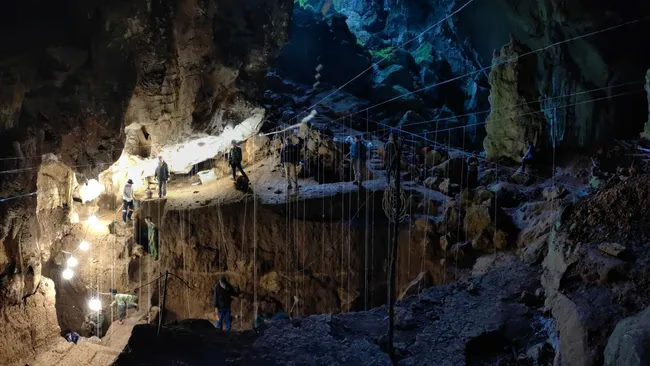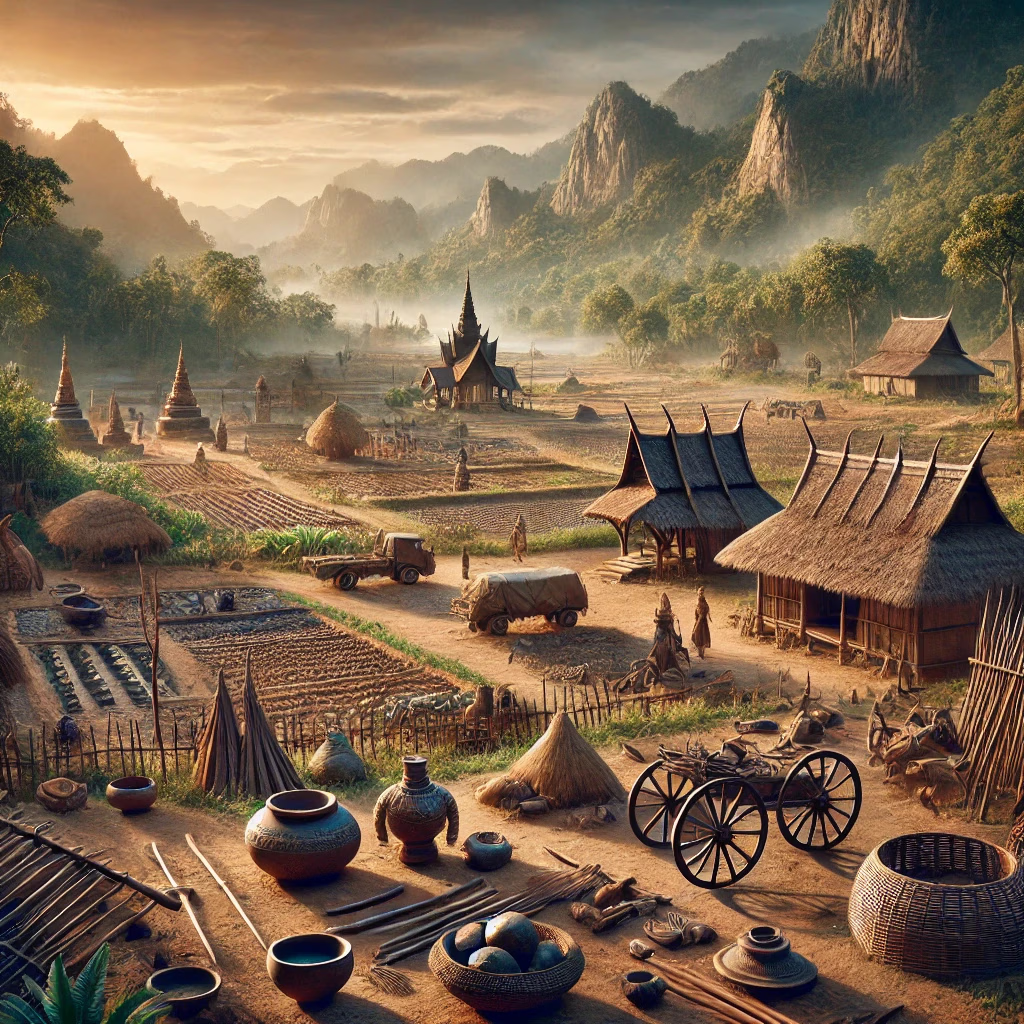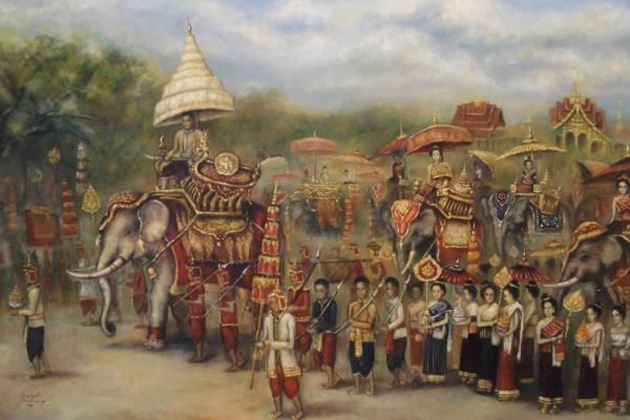ຊ່ວງເວລາ

Paleontological era
The Paleontological Era in Laos is marked by significant discoveries of early human and animal fossils. The fossils found in the Tam Pa Ling Cave date back to approximately 46,000 to 63,000 years ago and are among the oldest fossils exhibiting modern human characteristics.
During this period, the region of Laos was a habitat for a diverse range of flora and fauna, and early humans sustained themselves through hunting and gathering.
Research from this era has highlighted Laos's critical role in understanding ancient human migration patterns and lifestyles.
Pre-history
The prehistoric period in Laos is marked by the migration and settlement of early humans, the introduction of agriculture, and the use of metal tools. Around 2000 BCE, the use of bronze and later iron began to spread throughout the region.
During this time, people primarily sustained themselves through hunting and gathering, gradually transitioning to settled agricultural communities.
Early agricultural societies in Laos cultivated rice and other grains, which played a significant role in the development of the region's agriculture.
Pre-Lanxang period
The Pre-Lanxang period in Laos is characterized by the early development of agriculture, the use of bronze and iron tools, the formation of Indianized kingdoms, and significant cultural exchanges.
This era was particularly influenced by the Funan and Champa kingdoms, which introduced Indian culture and Buddhism to the region.
Lanxang preiod
The Lan Xang period in Laos began in 1353 when Fa Ngum established the Lan Xang Hom Khao kingdom, which means "The Land of a Million Elephants." This era represents a golden age of cultural and economic prosperity for Laos. It was a significant turning point in Laotian history, marked by the widespread adoption of Buddhism and the construction of many temples and cultural heritage sites. The kingdom flourished until 1707, when internal divisions led to its split into three separate kingdoms: Luang Prabang, Vientiane, and Champasak.

Fight for Independence
Laos' fight for independence lasted from 1945 to 1953, resisting Japanese occupation and French attempts at recolonization.
The struggle was led by communist resistance movements like the Pathet Lao, ultimately achieving independence from France in 1953.
From 1975 to Present Day
In 1975, Laos became the Lao People's Democratic Republic after the Pathet Lao established a communist government. The country faced economic difficulties and diplomatic isolation, but introduced the 'New Thinking' policy in 1986, transitioning to a market economy and attracting foreign investment.
Today, Laos continues to experience economic growth, with tourism and hydropower as key industries.